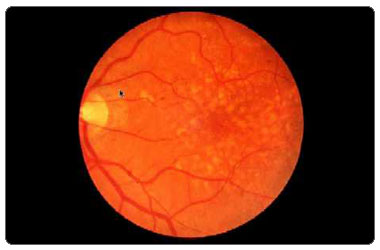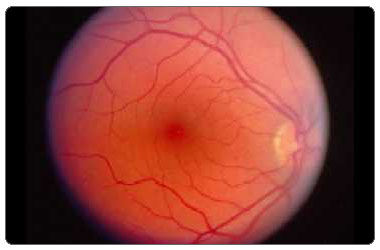Accelerated Orthokeratology. It’s here.
Optos Retinal Imaging
Since January 2004, our office has employed the Optos Digital Scanning Ophtthmoscope. This allows us to digitally photograph up to 220 degrees of the inside of each eye. This is one of the best ways to look for any eye related disease or systemic diseases (diabetes, high blood pressure, multiple sclerosis and atherosclerosis).
These images are stored and are a reference point for comparison year to year.
Dilated Retinal Exam

For those patients identified as being at risk for retinal diseases, a dilated retina exam allows your doctor to carefully evaluate this area of the eye. Here’s a few of the things you will be examined for:
- The retina is the only place in the human body that blood vessels can be observed without doing surgery first. Both arteries and veins can be seen as they spread across the back of the eye. Many health conditions which affect blood vessels can manifest here, such as diabetes, high blood pressure, hardening of the arteries (atherosclerosis), and risk of stroke.
- The optic nerve which connects the eye to the brain can also be seen. It is one of twelve main nerves from the brain, and it is part of the central nervous system. Again, this is the only place in the human body that the nervous system can be directly viewed. Eye fluid pressure can damage the nerve in a condition called glaucoma. Swelling of the nerve can indicate the presence of a brain tumor, multiple sclerosis, or high spinal fluid pressure.
- The central vision area, or macula, is the dark red area in the center of the photo.

- It gives fine detail vision and enables us to see color. Macular degeneration, a condition in which this area becomes deposited and distorted, is the leading cause of blindness in people over the age of 60.
- The peripheral retina can only be viewed during a dilated exam. It can degenerate and become thin in areas. This can lead to a tear in the periphery, or a retinal detachment. Highly nearsighted patients are at greater risk.
Dilation of the eyes clearly has many benefits and only a few temporary side effects. Some patients may notice mildly blurred vision, light sensitivity, and difficulty reading. These effects typically last for two to five hours. If you would like to have a dilated retina exam but cannot do so at the time of your exam, let you doctor know and he will gladly reschedule it for a more convenient time.

Eye Health Links:
Macular Degeneration:
- Macular Degeneration Network
Glaucoma:
Low Vision Resources:
Associations:

